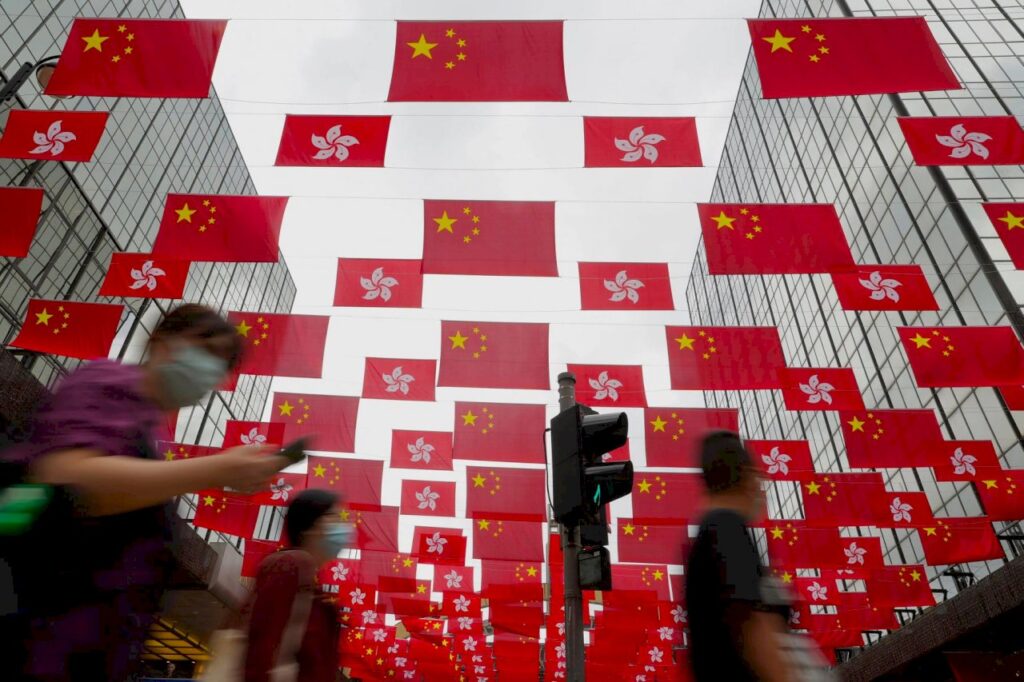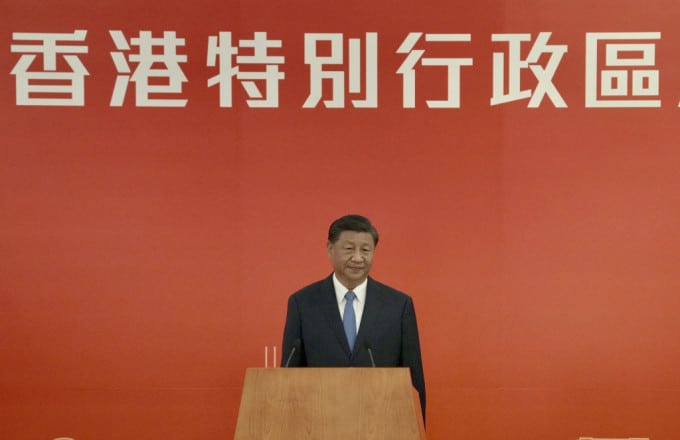Candidates for the Legislative Council by-election were DQ (disqualified), the Hong Kong National Party was banned, and Ma Kai’s visa renewal was refused. A series of political controversies triggered the Hong Kong citizens and the international community to pay close attention to the one country, two systems. Pan-democrats were re-elected in the Kowloon West by-election. After two defeats, the number of people marching on July 1 and New Year's Day dropped, and even foreign media questioned the prospects of "Hong Kong independence." Some people blame improper election strategies, some assert that the social atmosphere is cold, and some resort to chilling effects, but few are willing to admit another explanation that is more realistic: citizens realize that radicalism is no way out, so public sentiment turns to moderate politics. look up. This article will use polling data to analyze how the political landscape has evolved over the past year and a half.
The non-establishment camp lost 400,000 people
Since mid-2017, Ideas on Democracy has conducted random sampling telephone surveys every six months to objectively evaluate the overall situation of one country, two systems. A total of 4 rounds of polls have been conducted so far. Figure 1 shows the political leanings of Hong Kong citizens in the first round (mid-2017), the previous round (mid-2018) and the current round (end-2018). Moderates are the largest group (around 60%), that is, citizens who consider themselves "centrists" and "have no political leanings"; those who consider themselves non-establishment are the second largest group (less than 30%), including "democrats" and "other non-establishment" Establishment faction" (mainly localism and self-determination faction); the establishment faction accounts for the smallest proportion (below 12%).
From mid-2017 to the end of 2018, the proportion of the population of moderates and establishment groups increased, while the proportion of non-establishment groups decreased. Calculated in terms of population ratio, the moderates increased by 5.8 percentage points, from 58.4% to 64.2%; the establishment faction increased by 1.3 percentage points, from 10% to 11.3%; the non-establishment faction decreased by 6.5 percentage points, from 28.2% to 21.7%. . Among non-establishment supporters, democrats decreased by 4.4 percentage points, from 21% to 16.6%; other non-establishment supporters decreased by 2.1 percentage points, from 7.2% to 5.1%. This trend signifies the rapid rise of de-radicalization and moderate politics, which took a further turn in the second half of 2018.
The above distribution can be converted into absolute values based on Hong Kong's adult population. In mid-2018, the population aged 18 or above was 6,099,900 (excluding foreign domestic helpers). Those belonging to the moderate camp and the establishment camp increased by approximately 335,000 and 79,000 respectively, while the non-establishment camp lost approximately 403,000 people. Among the non-establishment groups, the democrats lost about 274,000 people, while other non-establishment groups lost about 128,000 people. In the past year and a half, a large number of non-establishment supporters have switched to moderates and establishment parties, which is consistent with the recent by-election results and echoes the general impression that social divisions are gradually improving.
HKU private research data confirms de-radicalization
Due to the fact that we have only conducted 4 rounds of surveys and there are still few observation points, it is not enough to prove whether this de-radicalization trend has reached a statistically significant level. However, the University of Hong Kong's Institute for Civil Affairs has been collecting data on political leanings every two weeks since late October 2016. By December 2018, it had been collected 55 times, which is enough to test the changing trends of various factions.
Figure 2 shows a survey conducted by the University of Hong Kong. About half of the respondents chose "leaning towards the center" or "not having a political attitude", about 30% respondents "leaning towards the democrats", and 15% or below respondents "leaning towards the establishment". The above three correspond to the "moderates", "non-establishment factions" and "establishment factions" of democratic ideas respectively. The distribution is exactly the same: "centrists" account for the most, followed by "democrats", and finally the "establishment faction".
We use this to calculate three sets of linear trends that best match each faction's share of the population. Statistical analysis confirms that centrists are on the rise, equivalent to an annual increase of 1.4 percentage points, while democrats are on a downward trend, equivalent to a loss of 1.6 percentage points per year. Both increases and decreases have reached statistically significant levels, which is consistent with the trends we have obtained. However, in the HKU Minyan survey, there was no clear trend in the changes in the pro-establishment camp reaching a statistically significant level.
More than 100,000 young people abandon local self-determination
Our survey further explores changes in political leanings among youth (18 to 29 years old). In the four rounds of polls, the proportion of moderates increased significantly by 15.6 percentage points, from 50.8% to 66.4%; while the proportion of non-establishment factions decreased by 14.4 percentage points, from 44.1% to 29.7%. Among non-establishment supporters, the number of democrats dropped slightly from 22.6% to 19.6%, while the number of other non-establishment supporters dropped from 21.5% to 10.1%, less than half of the original number. In absolute terms, the moderates gained 154,000 young supporters, while the non-establishment lost 143,000 young supporters. Although the relevant changes were only significant in the second half of 2018 (from the third to the fourth round of the survey), it is not appropriate to draw a conclusion too early. However, the sharp decline in localism and self-determination is still worthy of continued attention.
Whether it is democratic thinking or the survey conducted by the University of Hong Kong, the proportion of non-establishment supporters has always been less than 40%, and the proportion of supporters of the establishment has been even less than 20%. It seems that there is a far gap with the vote share of the two in previous elections. In fact, most citizens do not participate in voting and are not even voters. Citizens who are not keen on speaking out are believed to be more likely to be moderates. Therefore, the election results may not reflect the true political landscape of Hong Kong. The so-called "June 4 ratio" of the pan-democratic establishment is due to political polarization and is also affected by factors such as voting intentions, political platform issues, campaign strategies, and personal charisma. History has proven that the "golden ratio" is not unbreakable. The shifting political tectonic plates have far-reaching consequences. The rapid rise of deradicalization and moderate politics in the past year and a half is enough to influence the outcome of the confrontation between the pan-democratic establishment. If candidates representing moderates emerge in the future, the traditional political landscape may be overturned again.
The author Song Enrong is co-convenor (research) of Democratic Ideas and deputy director of the Economic Research Center of the Hong Kong Institute of Asia-Pacific Studies at the Chinese University of Hong Kong. Pan Xuezhi is an associate researcher at the Shanghai-Hong Kong Development Joint Institute of the Chinese University of Hong Kong.



